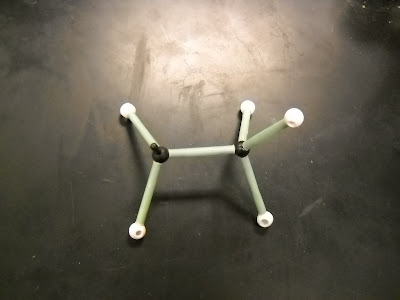

Introduction: The purpose of this lab is to find out the number of grams of copper that will be formed from an oxidation reduction reaction when you know the mass of Aluminum that reacted with a known amount of copper 2 sulfate pentahydrate and to compare this to the actual yield of copper.
Purpose: To determine the # of grams of copper that will be produced from an oxidation reduction reaction when you know the mass of aluminum that reacted with a known amount of copperII sulfate 5hydrate and to compare this to the actual yield of copper.
Materials & setup: 1.) measured sample of aluminum powder, and measured amount of copper sulfate pentahydrate 2.) React the 2 in a aqueous medium within a medium sized beaker, 3.) stir frequently 4.) Filter 5.) dry 6.)Weigh the resulting product.7.) Safety equipemt-goggles&aprons 8.0 Bunsen Burner and striker 9.)Medium sized beaker & funnel
Procedure: First we got a medium sized beaker. We added about 150 ml of water to the beaker, and set up the Bunsen Burner to the gas. Measured out about 15g of Copper(II) sulfate pentahydrate (CuSO4---> 5 H2O and then recorded the mass in the data table.We slowly added the crystals(CuSO4) to the heating water. With a glass stirring-rod, we stirred the solution until the crystals were mostly all dissolved. Then we got about 2 grams of aluminum powder and carefully added it into the hot solution. We continued stirring for about 15 minutes until you we could hardly see any pieces left. We heated the solution for about 3-4 mintues after all the pieces were dissolved, then removed from heat. Then we used the filter paper and filtered out the residue in the beaker, catching the filtrate in the Erlenmeyer flask. We rinsed out the beaker with a small amount of water to rinse out the residue in the bottom. We spread out the filter paper and let it dry overnight. We cleaned and dried the glassware and turned off the Bunsen burner and put it away. The next day we looked at our results of the dried filter paper. We made a table of our results:
| Name | Mass |
| CuSO4 | 16.79 |
| Al | 2.13 |
| coffee filter | 1.1 |
| 1.7 | 1.7 |
Analysis:

1. Write a balanced reaction equation. 3CuSO4+2Al---> 3Cu+Al2(SO4)3
2. Write the net ionic equation: 3CuSO4(s) + 2Al(s) --> 3Cu + Al2(SO4)3(s)
3. What is the reducing agent and oxidizing agent?
4. Calculate the mass of the copper:22.1g Al X 1 mol Al/26.98g Al X 1 mol Cu/1 mol Al X 63.55g Cu/1 mol Cu = 78.1g Cu
5. Subtract the filter paper from the dry residue/ product in our data table(actual yield of Cu)
6. Percent yield of experiment
7. Give 3 reasons of why the amount of copper that should have formed and the amount of copper that actually formed might be different.






